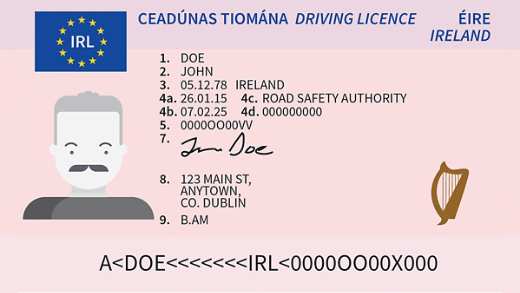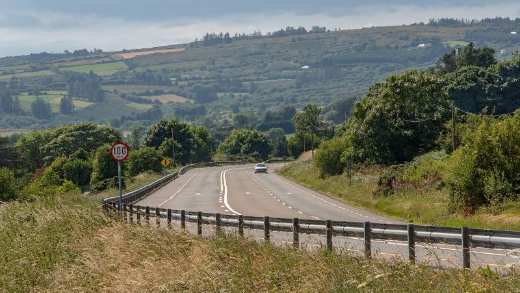When you’re on the roads there are lots of things to watch out for, with road markings among the most important. They’re to guide and warn drivers on anything you need to know on a given road, they’re ever-present across the Irish road network – and every single Irish road sign means something.
As you’d expect, road markings in Ireland have progressed over time as our roads have evolved. We’ve put together a concise guide to understanding the most common Irish road signs.
Top ten most common Irish road markings in Ireland
1. Single yellow lines

If there’s a single yellow line along the edge of the road, you can’t park there during certain times. You should see a nearby sign containing all the pertinent information you need to know.
2. Double yellow lines

Double yellow lines along the edge of the road mean you can’t park there at any time. It applies at all hours of the day, including Sundays and Bank Holidays.
3. Single broken yellow line along the left-hand side of the road

If you see a single broken yellow line along the left-hand side of the road, this indicates a ‘hard shoulder’. It should only be used in the case of a breakdown or emergency, or if you are driving a slow moving vehicle, to allow faster traffic to overtake you if it’s safe to do so. Be aware that this isn’t an additional traffic lane.
4. A solid line at a junction, with a broken line behind it

If you are about to turn into a junction or entrance, and you see a solid line, with a broken white line behind it, it means ‘No Entry’. Sometimes, you may also see the words ‘No Entry’ accompanying these markings.
5. Single broken white lines along the centre of the road

The most common white road marking running down the centre of a road, these separate lanes of traffic and indicate that you should remain on your side of the road, unless it’s safe to overtake, pass an obstruction or turn right.
6. Single longer broken white lines, with shorter gaps between the lines

These warning lines with longer broken white lines, with shorter gaps between them, alert a driver to a potential hazard ahead. You must not cross them unless it is safe to do so.
7. Single solid white line

A single solid white line which runs along the centre of the road shows you that you should not overtake or perform a U-turn at any time. You must keep to the left, unless in an emergency or for access.
8. Double broken white lines

Double broken white lines along the centre of the road, signal that a solid white line lies ahead.
9. White lines that run in zig zags

You’ll see white/yellow lines that run in zig zags at the edge of roads. These show that you’re approaching a pedestrian crossing, and you can’t park in this area. You should also not overtake the leading vehicle on approach to the crossing.
10. Yellow diagonal box in the centre of the road

This yellow box indicates a junction, and you can’t stop or park in this area or obstruct other road users. You should only enter one of these boxes when you are turning right and your exit is clear, providing it’s safe to do so.
Even if you’ve already passed your driving test, it’s always a good idea to keep up to speed with Irish road signs and markings – and, of course, any changes which may come into effect. Check out the Rules of the Road Book for everything you’ll need to know to keep you safe on the roads.
Buy your car insurance online and get a 15% discount1. Get your quote today.
We encourage our customers, where possible, to make use of our online options to access any help you need. If you have a query you can reach us via our contact forms. MyAviva is an online self-service portal available to all our home and car insurance customers.
















